November 2016
Meet the lab
Rachel Wachtendonk, undergraduate student
5 November 2016
Meet the lab members who make the Whatcom Creek Project possible.
IAN BLIXT
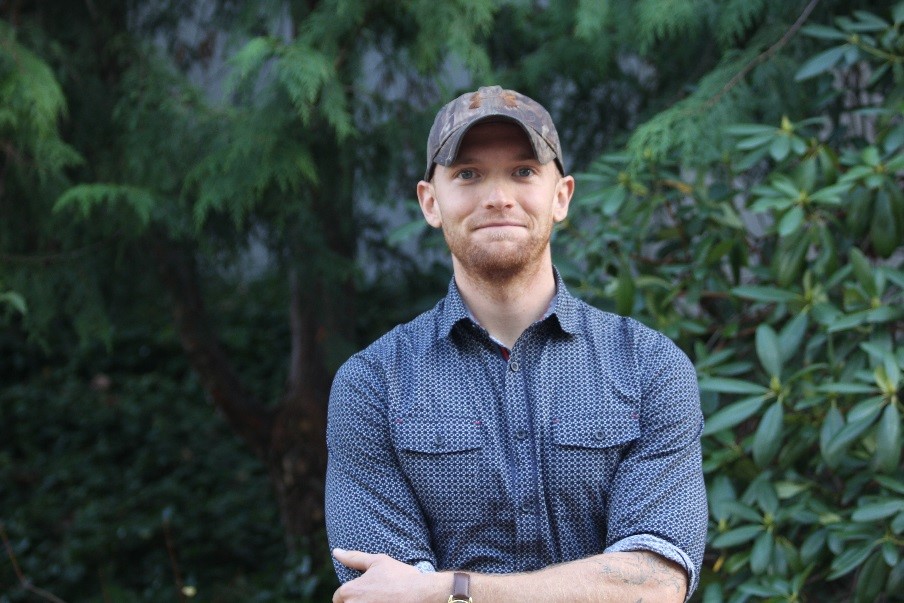
Ian is a senior at Western in the Biology major with an emphasis in ecology, evolution, and organismal biology. He is from Vashon Island, which is in the Puget Sound just off the coast of Seattle. After graduating this spring Ian is intending on going to graduate school for marine biology, focusing on marine reserves and fisheries. In the Whatcom Creek project, Ian is identifying which species of salmon the seals are hunting to begin to understand the seal - salmon fishery interaction
HANNAH BURLEY

Hannah is a senior at Western and will be graduating in the spring of 2017 with a BS in Biology with an emphasis in evolution, ecology, and organismal biology (EEO) and a minor in psychology. She has been working in the Whatcom Creek Seal Project since the spring of 2015 and was the manager over the summer of 2016. Her love of animals has also brought her to start volunteering at the Whatcom Humane Society. After graduation Hannah hopes to work with wildlife in some capacity, with a focus on rehabilitation, conservation, or restoration.
SKYE FRENCH
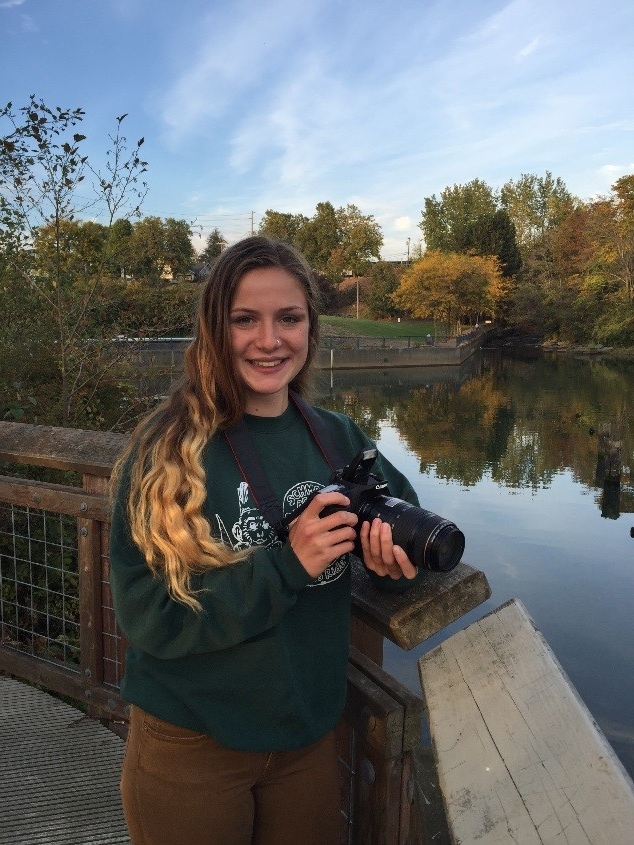
Skye is a third-year Environmental Education student at WWU, and this is her second year working on the Whatcom Creek Seals project. She is an in-training naturalist and huge Pacific Northwest bird and plant nerd. Skye taught with Wilderness Awareness School in Seattle over the summer, teaching children about tracking, forest ecology, and native plants. In her free time she loves hiking, baking, and frolicking with animals.
MAKENNA JOHANSEN
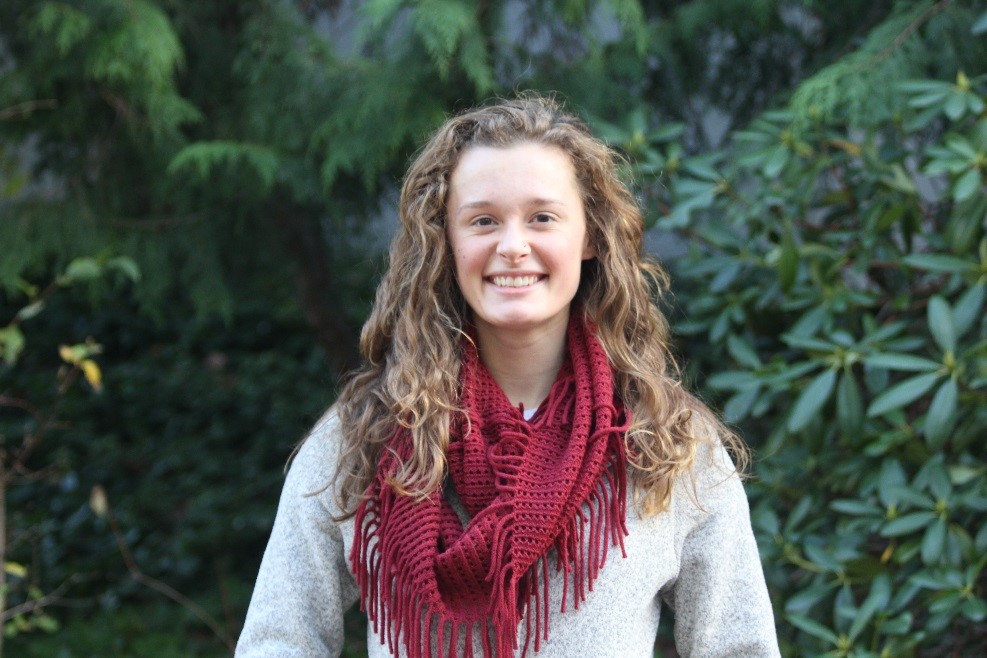
This is Makenna’s first year with the Whatcom Creek Project and her fourth at Western. Her two loves are animals and ballet, inspiring her major in biology and a minor in dance. She performs regularly on Western’s campus through the Dance Department and plans to dance in a company after graduating before she pursues further education in biology. A native to Fairbanks, Alaska, she was drawn to Western’s mutual love of the great outdoors, and finds joy in hiking and good food.
BRE MILLS

Bre is a third-year Biology student at WWU with an emphasis in marine biology. This is her first year working on the Whatcom Creek Seal Monitoring Project. In addition to being a part of this project Bre is also a Doris Duke Conservation Scholar for the University of California, Santa Cruz Doris Duke Conservations Scholars Program (DDCSP). Bre is very interested in studying marine mammals and invertebrates, by being in this lab she hopes to gain experience in marine research and come away with a better understanding of her future career aspirations. In her free time Bre loves singing, enjoying time with friends and exploring the natural world.
MACKENNA NEWMARCH
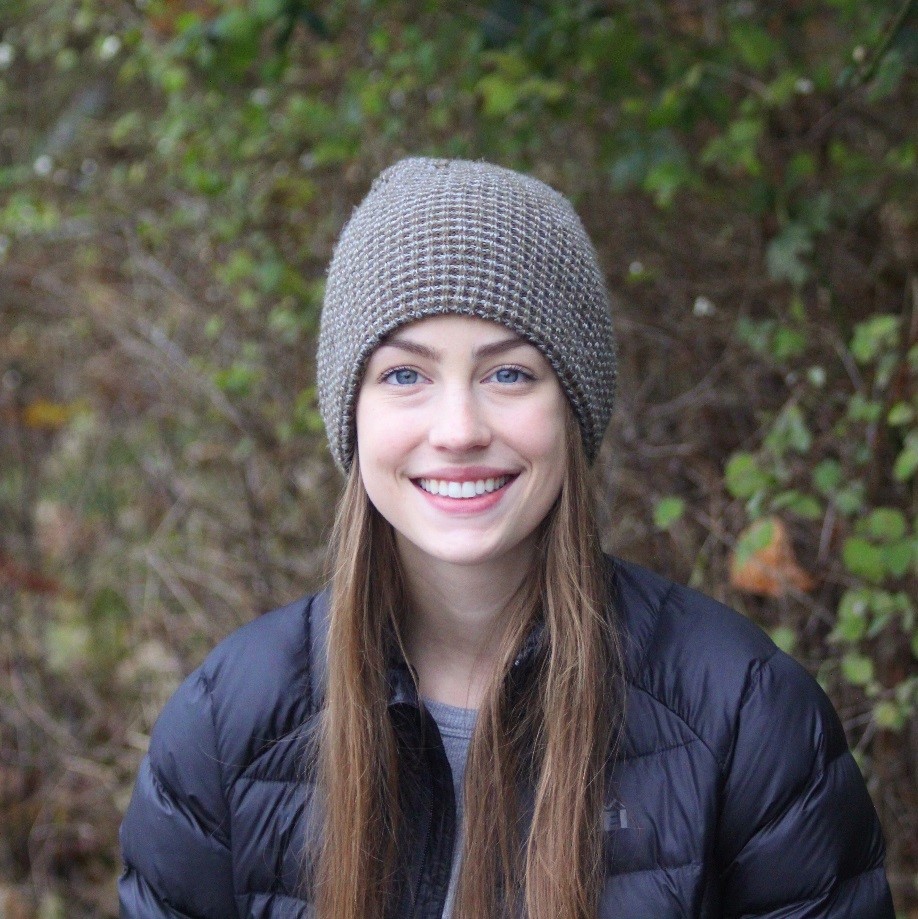
MacKenna is a third-year Biology student with an emphasis in marine biology and with minors in Environmental Education and Anthropology and this is her first year in the Whatcom Creek Project. She loves hiking around Mount Baker, sailing in the Salish Sea, and adding to her vinyl collection. Her talents include making latte art, naming every fish in the Northwest, falling off her bike at stoplights, and writing poetry. She is very excited to be studying harborsSeals and cannot wait to be included in more marine research to come!
MARIA PRIETO

Maria was born in Mexico and she lived there with her family until they moved to Seattle, WA in 2002. This is her fifth year at Western and will graduate in spring of 2017 with a double major in Biology (evolution, ecology, and organismal biology emphasis) and French. Maria loves animals and has had two internships at the Whatcom Humane Society Wildlife Rehabilitation Center, where she continues to volunteer throughout the year in between internships. After she graduates Maria hopes to attain a job in a Big Cat sanctuary or work in the field as a wildlife biologist studying big cats.
RIO RONDEAU
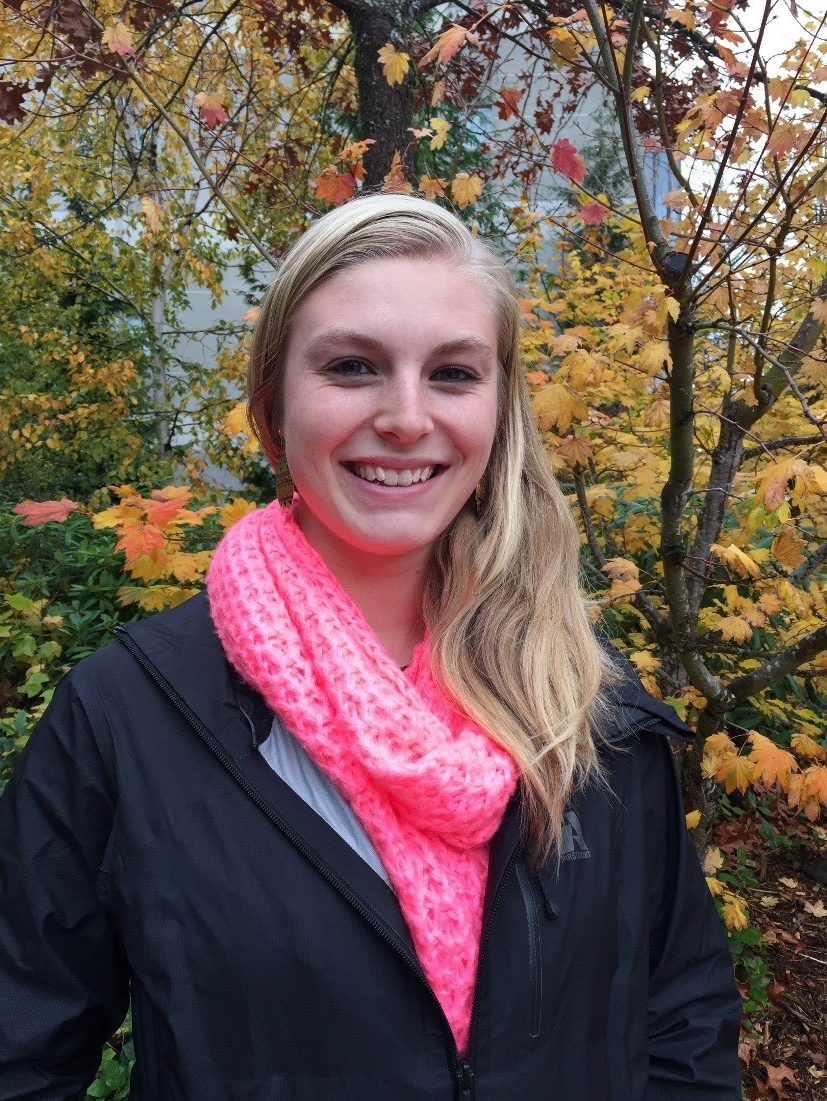
Rio is a senior at Western Washington University majoring in Biolpgy with an emphasis in ecological, evolutionary, and organismal biology. Originally from Colorado, Rio grew up around wildlife and her love of the outdoors and rain brought her to Washington. Her passion is working with animals, which helped her choose which research lab she wanted to volunteer in. She hopes to one day work in big cat wildlife rehabilitation, and is well on her way by volunteering at a birds of prey rehabilitation center in Colorado and volunteering at the Whatcom Humane Society.
RACHEL WACHTENDONK
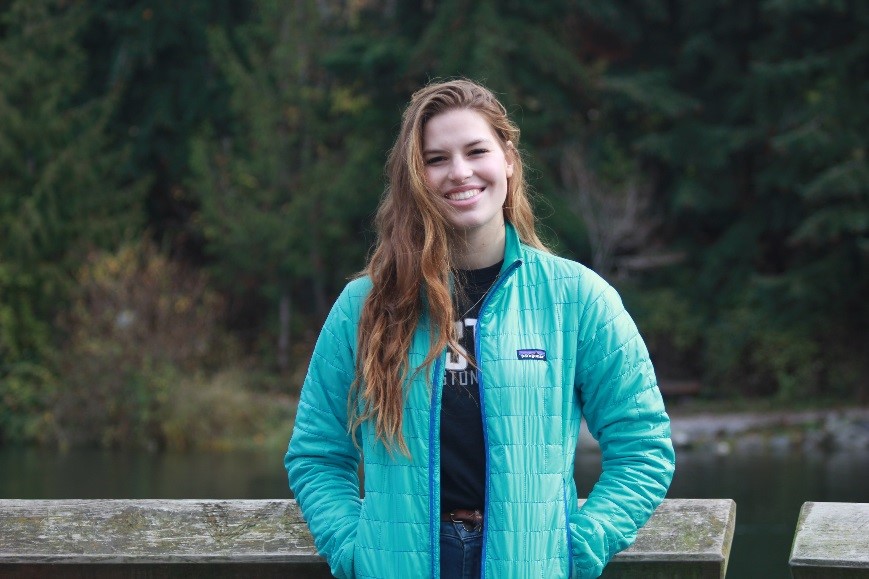
Rachel is the current manager of the Whatcom Creek Seal Monitoring Project. This is her third year participating in research and she will be graduating in the spring with a BS degree in Biology (marine biology emphasis). She is undecided as to where she will attend grad school but is excited to continue with pinniped research. In her spare time Rachel enjoys hiking with her two dogs, painting, and baking treats for her roommates. One of her goals for the future is to summit Mount Rainer.
Science from a new perspective
Raven Benko, undergraduate student
4 November 2016
It is always interesting to experience science through the eyes of another, whether that be one who has vastly more experience than you or one whose only notion of science is that of test tubes and crazy white hair. Recently, my studies have introduced me to the role of science in policy. From what I have learned so far, science and policy don’t work as neatly together as I had once hoped. In the context of the research we do in the Marine Mammal Ecology Lab, this science-policy (or even just science-community) interface is extremely important to understand, especially if we want our research to be recognized, funded, supported, etc.
So what does science in policy look like? Many scholars, politicians, and scientists view this interaction in what is coined the Linear Model. Discussed in Roger Peilke’s book, The Honest Broker: Making Sense of Science in Policy and Politics, and in other academic literature, the Linear Model is a stepwise process defining the function of science in policy and society at large. First, an objective scientist conducts research born from his or her own curiosity in an attempt to gain a better understanding of the world. This new knowledge is then put into a pool of resources – scientific journals and other means of presentation. Finally, some time down the road, a politician will be looking for an answer to a current problem and will draw on that pool of information. This process seems pretty simple, but in all reality, it is entirely inefficient in current society. Today we are facing huge questions that need scientific answers and the more information we throw into the pool tends to just muddy things up and add uncertainty. The way that science communicates (or doesn’t) can greatly impede any move toward political, environmental, or social change.
I have been becoming increasingly more frustrated with the way science is presented and communicated – often merely to a small subset of other scientists within the same field. I can only imagine what it must be like for a member of the public to try to grasp today’s relevant scientific findings. Not only would they have to cough up an extremely expensive subscription fee to a scientific journal but they would then have to muddle through the scientific vernacular, complicated statistics, and ALWAYS be left with the notion that more research must be done to better understand the problem. For obvious reasons, this would be frustrating, time-consuming, and entirely inefficient. Additionally, with the entire pool of scientific knowledge at one’s disposal, it becomes all too easy to cherry-pick favorable scientific findings to support any argument. We see this frequently in the climate change debate.
Despite this lack of communication, it is unfair to put all of the blame on scientists for the inefficient use of science in policy. Without making any excuses, science is hard work. In a recent piece by Christie Aschwanden titled “Science Isn’t Broken”, she goes into several different aspects of science that make it so difficult to do and do correctly. She argues “If we’re going to rely on science as a means for reaching the truth – and it’s still the best tool we have – it’s important that we understand and respect just how difficult it is to get a rigorous result”. That doesn’t mean that scientists can’t get better at informing the public, it just means that we must make the same allowances for scientists that we do for all others in any sort of prominent, influential position. Scientists make mistakes, we in fact readily recognize and improve upon those mistakes without undue consequences. If we can recognize science’s imperfections, we may be able to work with science in a more adaptive and continuous way instead of searching for absolute truths for current societal problems.
Does this mean that scientists need to take a more active role in policy and abandon the Linear Model? Would this leave more room for corruption in science? Are scientists being all we can be by simply conducting our research and letting others do with it what they will? I don’t have an answer to any of these questions, but I think it is important for every scientist to understand what their work is doing for the greater good. Otherwise, what are we all here for?
As I deviated slightly from the common update on marine mammals in Bellingham, I leave you with a picture of a group of Stellar sea lions in the San Juan Islands taken by our very own Rachel Wachtendonk. Until next month!

Steller sea lions. Photo: Rachel Wachtendonk.